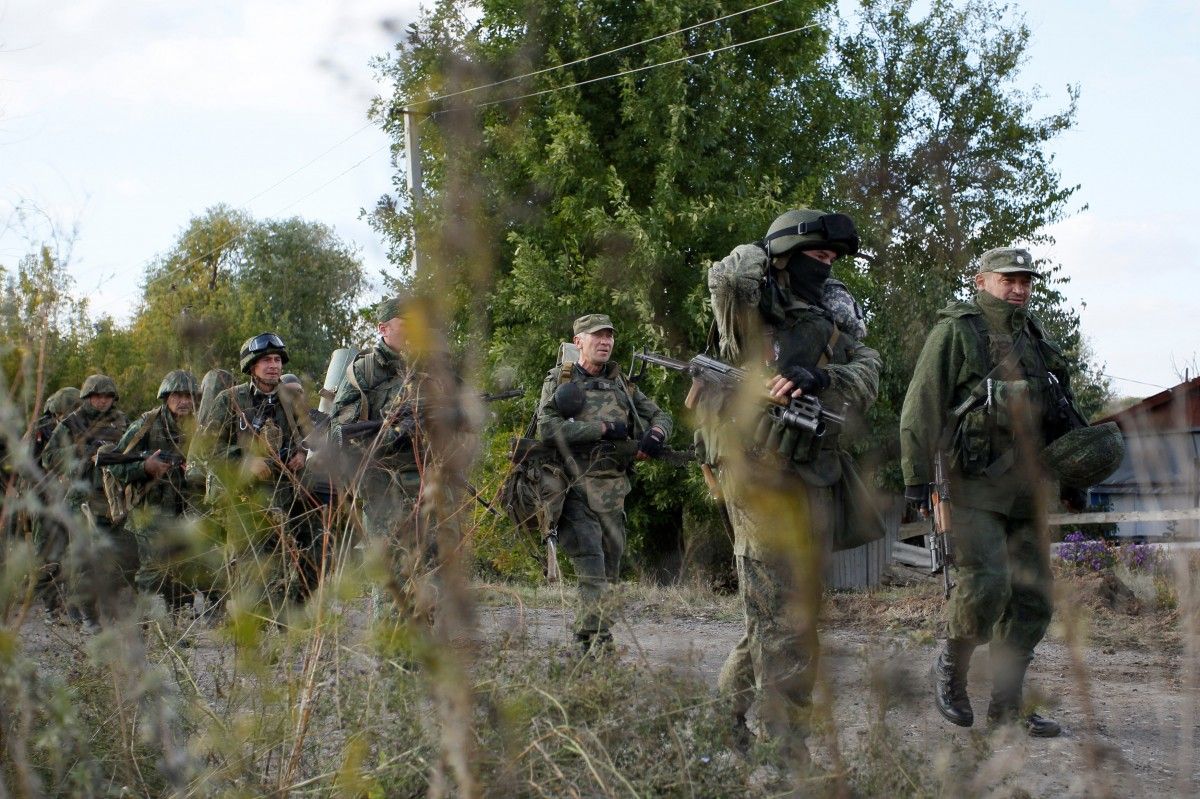
What the Kremlin gets is a large and powerful proxy army that allows it to maintain plausible deniability of official involvement in the Ukraine conflict, while the volunteer soldiers, according to the fighters themselves, get next to nothing, Christopher Miller wrote in a report titled “Gore, But No Glory For Russia's Ukraine War 'Veterans',” published by RFE/RL.
Russians come to Donbas “bursting with patriotic bravado” and convinced that they are following in the footsteps of their grandfathers by fighting against "fascists and Nazis."
However, they don’t return “to a hero's welcome.”
Read alsoOSCE spots mercenaries with Russia army insignia in occupied DonbasMost bear permanent scars, both physically and mentally, and with no veterans benefits and few jobs available they struggle to make ends meet, according to Miller.
It is just a couple of non-governmental organizations who provide some aid to the “veterans.” Among them is the Union of Volunteers of Donbas, a group headed by Aleksandr Borodai, the former leader of the self-proclaimed "Donetsk People's Republic." The group is closely tied to the Kremlin through Vladislav Surkov, Russian President Vladimir Putin's point man on the conflict, and seen by some volunteers as being elitist.
Another is the Public Movement of Novorossia, an organization headed by Igor "Strelkov" Girkin, a Russian who commanded separatist forces in the first months of the war but is viewed by many volunteers as a traitor for retreating and relinquishing territory in Ukraine to Kyiv.
Andrey Kamayev, who runs the Veterans of Novorossia NGO in St. Petersburg, told the journalist how back in 2014 he had spent all his savings for a new camo and went to Donbas where, as most incoming mercenaries, he was given a beat-up old Kalashnikov rifle and 10 bullets -- just enough to "shoot and run."
Read alsoNGO reveals militant losses in Donbas in past weekBut happiness was a passing feeling. Three out of the 10 men he fought alongside returned home in coffins, while another five, including him, suffered serious injuries. Only two came home physically unscathed. Kamayev and Shchinkorenko say those grim casualty figures are generally in line with the thousands of volunteers who fought in eastern Ukraine.
Kamayev’s dream of military glory came to a quick and devastating end on February 1, 2015. A mortar shell exploded beside him, shredding part of his left leg. Without the proper medicine to treat him, gangrene set in and doctors were forced to amputate the rest of his leg up to his hip.
For his efforts he says he received only a onetime payment of 15,000 rubles, about $250. Kamayev lives on a measly state pension that he gets not for military service, but "for being an invalid -- like if I had been hit by a passing trolleybus."
Kamayev says there are many fewer volunteers willing to go to Ukraine and fight these days. Public support and crowdfunding to aid a cause isn't what it was three years ago.
Meanwhile, Veterans of Novorossia NGO wants to persuade the government to grant Russians who fought in Ukraine state status.
Read alsoWhat stands behind Russia’s defense budget cutThe effort has yet to really get off the ground, however. Kamayev admits that to push hard for such status now would be ill-advised, given that it would mean formal recognition by Moscow of having a hand in the war. "The less we will demand for ourselves, the more the state will probably respect us," he says.
Kremlin-backed forces fighting in Ukraine comprise 39,300 active fighters, including 36,400 "Russian proxies" -- a figure that includes volunteer fighters from Russia, Ukraine, other former Soviet republics, and elsewhere, the Ukrainian Defense Ministry's Main Directorate of Intelligence told RFE/RL on August 7.
Read alsoPGO report: Russian invasion major cause of Ilovaisk tragedyThe remaining 2,900, according to the directorate, are Russian regular servicemen, an allegation of involvement that has consistently been denied by the Kremlin despite a mountain of evidence to the contrary.

